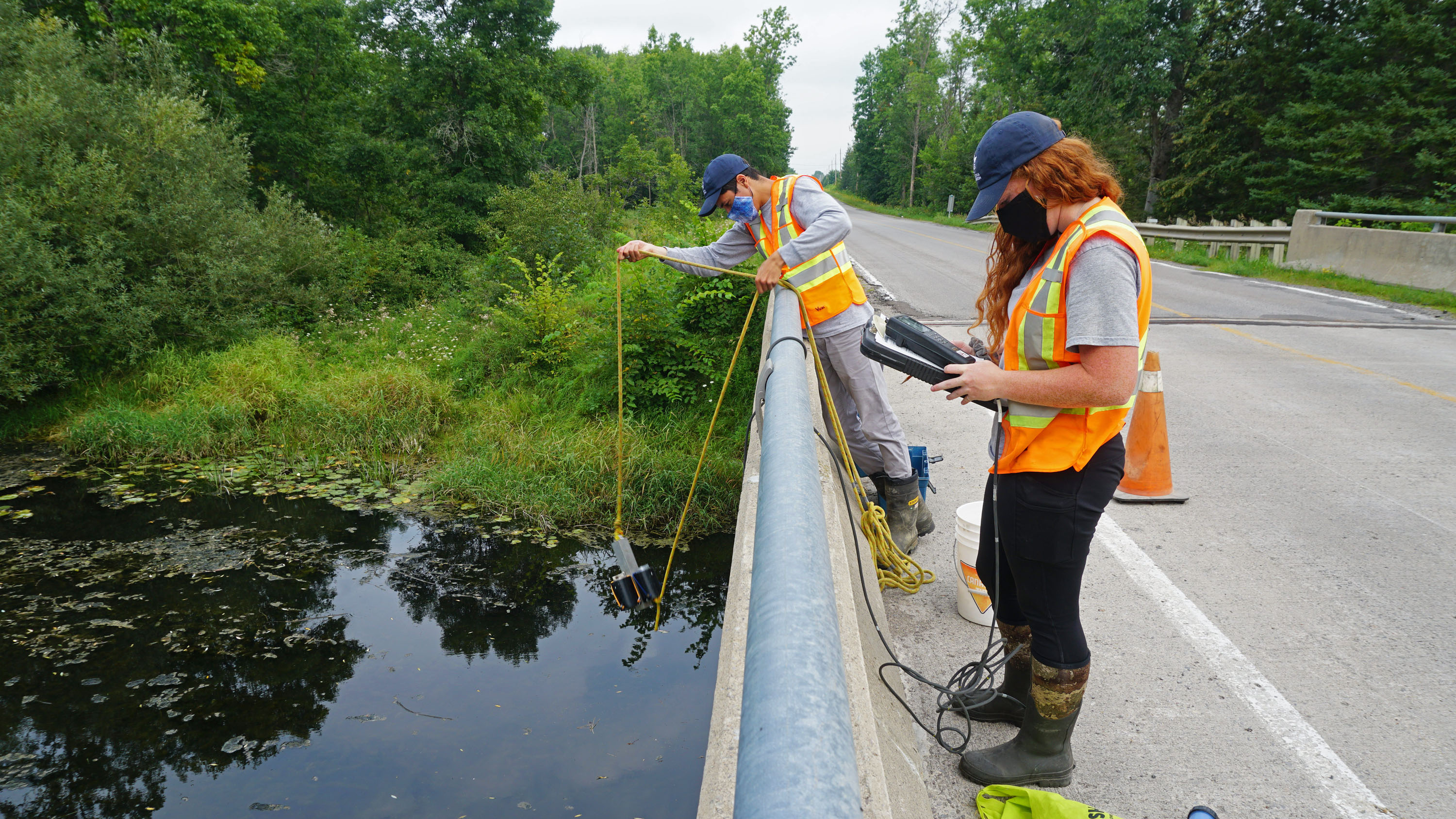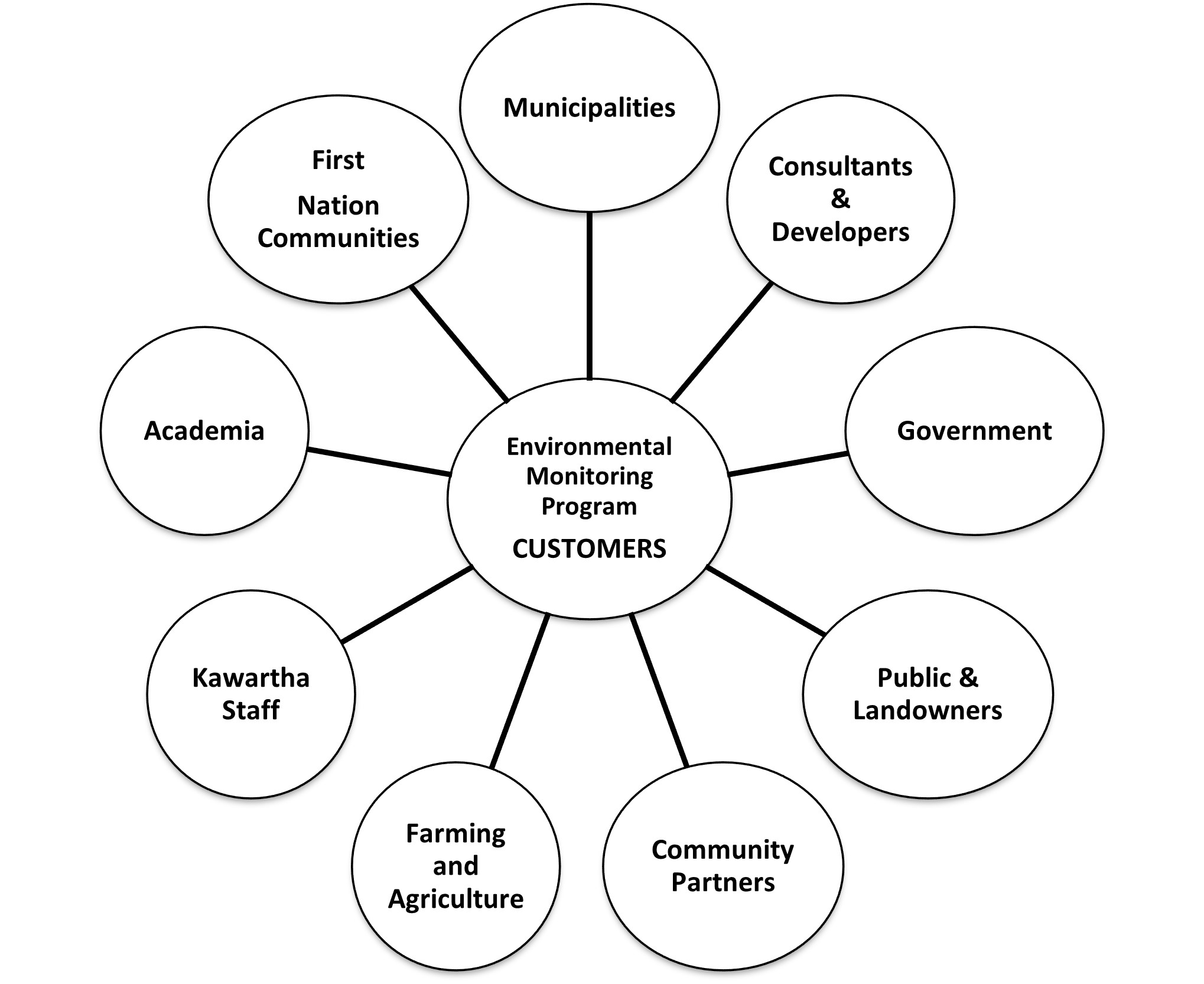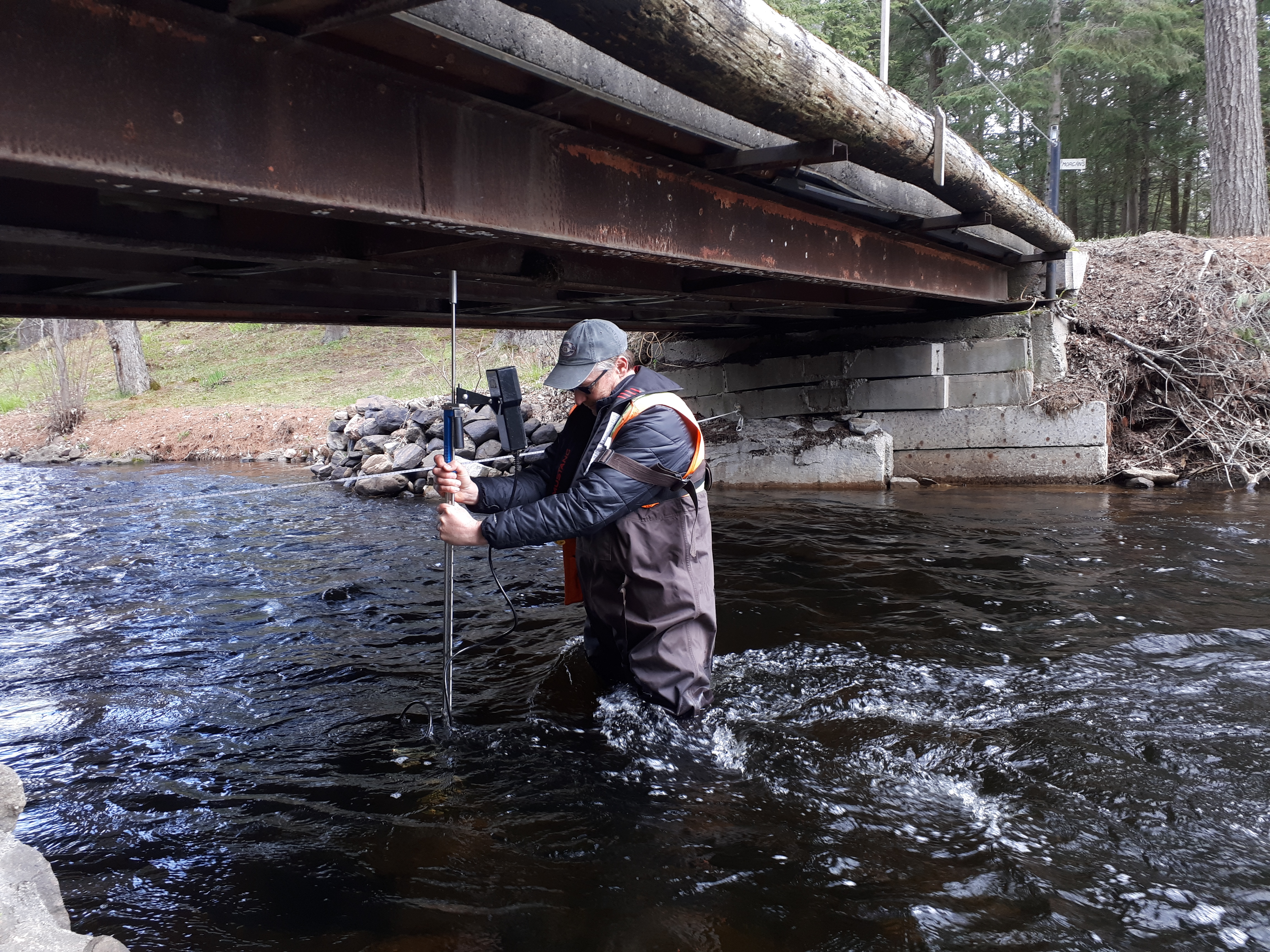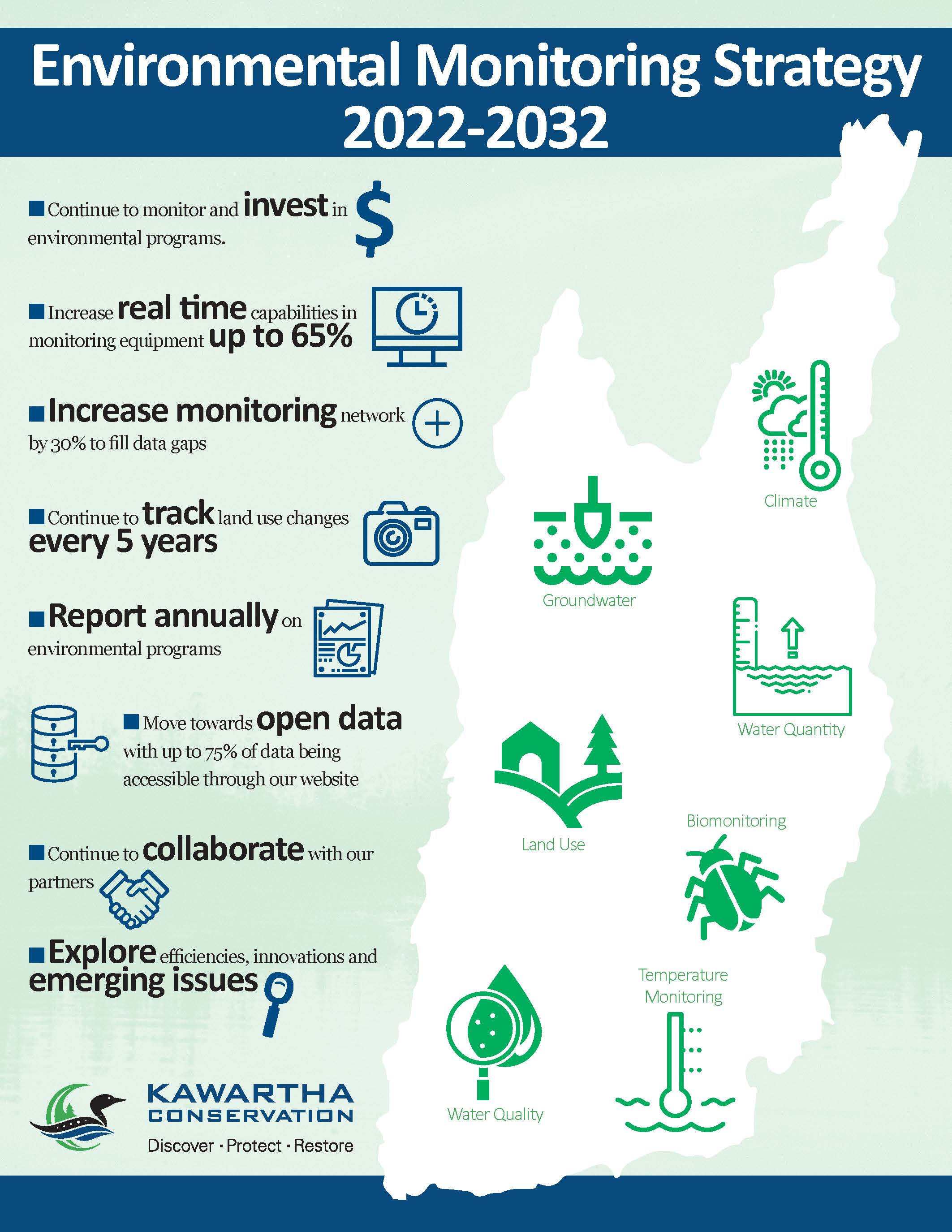Environmental Monitoring Strategy
In 2021, the Integrated Watershed Management (IWM) department embarked upon the development of a 10 year (2022-2032) environmental monitoring strategy. The development of this strategy is critical to all parts of our operations at Kawartha Conservation and will also help guide our monitoring activities and investment moving forward. To provide direction for this strategy, the project team developed a high level goal and clear objectives that set out areas of focus for the next 10 years.
Download the Board-approved 2022-2032 Environmental Monitoring Strategy below:
Environmental Monitoring Strategy

Goal:
To provide a cost-effective environmental monitoring network that facilitates evidence-based decision making, and that provides accessible, real-time science and data to our community, while aligning with our strategic goals and that of our municipal partners.
Objectives:
-
Develop a baseline of data to support our climate change strategy and strategies of our partners.
-
Reduce long term costs of our monitoring network with effective upfront investment.
-
Maximize the use of technology to enable remote data management and reduce staff resources.
-
Consolidate the number of sites we monitor where possible, identifying if we require new locations or opportunities to streamline existing site locations.
-
Provide up to date and where possible, live information and data to our customers through our website and partner platforms.
-
To utilize standardized protocols across organizations when available across our network to provide consistency in field methods and data collection.
-
Develop our connection and use of stakeholder data and information by sharing and collaborating.
-
Exploring sustainable ways to work with partners to provide long term monitoring networks.
Our Customers:

Background:
| Engagement Survey | |
|
In February 2021, two online surveys were compiled seperately and summarized for both Stakeholder/Community Partners and for the Public. Each survey provided valuable information on varying demographic information, program knowledge, understanding of gaps and what types of monitoring they felt would be valuable moving forward. This information helped to guide the direction of the strategy. |
|
|
Strategic Guidance Group |
|
|
To help assist in the development of the strategy, and to provide guidance throughout the process a strategic guidance group was initiated;
|
|
| Comprehensive Program Review | |
|
A 46 page comprehensive review of each current environmental monitoring program was conducted that included the following for each;
|
|
| Detailed Program Review | |
|
To fully understand the complexity of each current program additional questions relating to strategic plan/policy, financial investment, data collection, technology and reporting were asked. Below highlights some of our findings; 1. Current programs are driven by various levels of policies.
2. 8 of 10 programs require upfront investment costs. 3. 50% of programs experience data gaps across our watershed. 4. 50% of programs have technology in place to enable remote data management. 5. Majority of our programs report every 5 years. |
|
|
Draft Environmental Monitoring Strategy |
|
To review the entire Draft Environmental Monitoring Strategy please click here. |
|
|
Recommendations |
|
|
|
|




